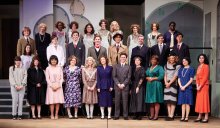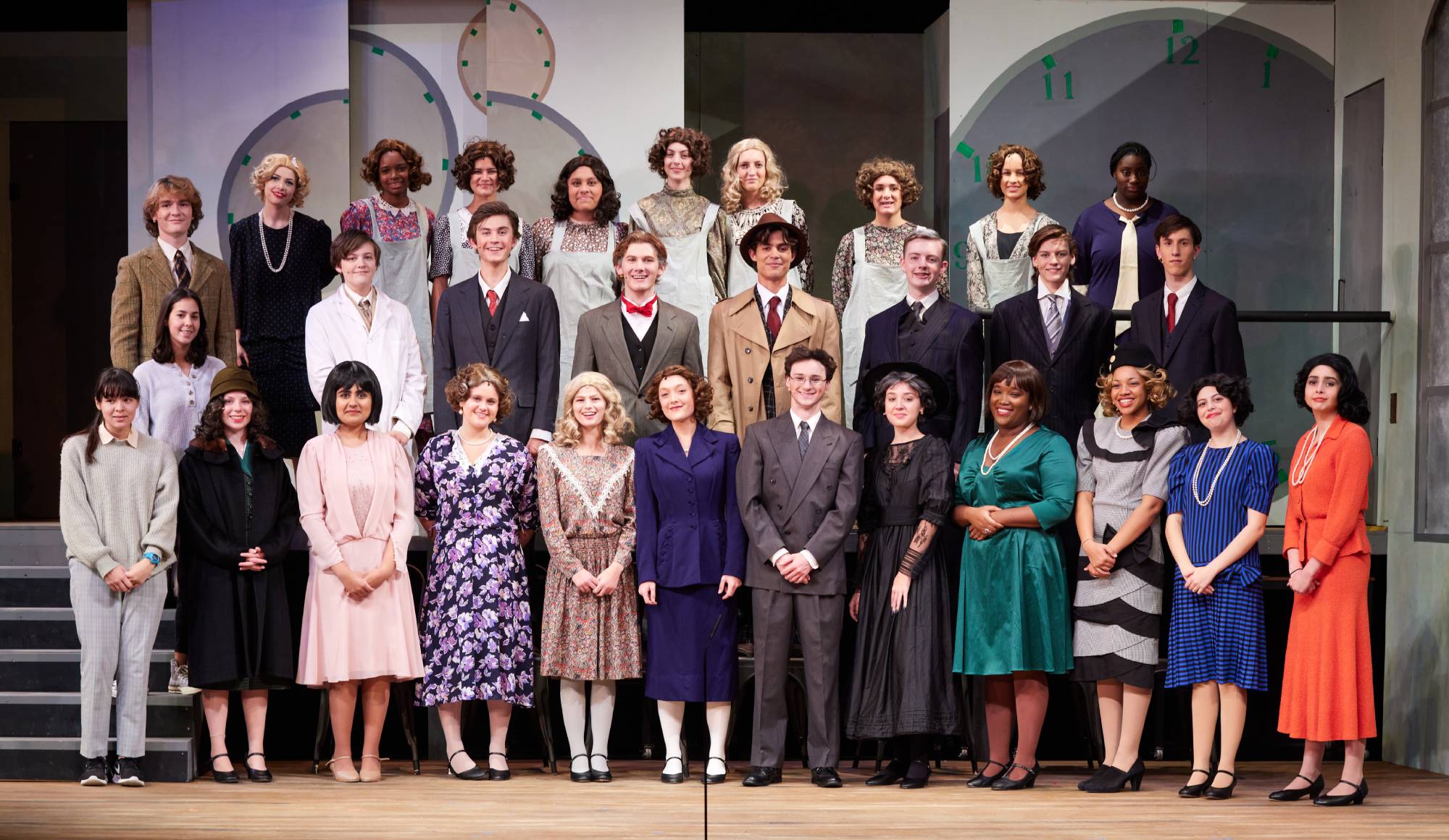
Before the curtain went up for the first performance of Radium Girls, Betsy Durning, the theater director, asked the student audience a question: “How many of you played a part in the production?” Nearly half the audience raised their hands. Presented on Oct. 21–23, Radium Girls was not the sole effort of its 30-member cast. The play became a part of the high school’s fall curriculum. Student projects related to the play were displayed in the lobby and programs in the form of a newspaper, dated May 8, 1925, full of well-researched articles were handed out to audience members.
“While the play you will see presented on our stage represents a splendid culmination of efforts, it is just one part of a much larger Radium Girls learning experience that the Upper School has engaged in,” said Ms. Durning. Based on the true stories of factory workers in Orange, NJ, in the 1920s who were poisoned by radium-based paint, the play documents the deleterious effect that painting watch hands with radium took on the workers’ health and family lives. Since the dials were very small, the women often used their lips to bring their brushes to a fine point causing a wide range of illnesses. The Radium Girls battled their way through the court system and sought compensation and acknowledgment of wrongdoing from the United States Radium Corporation. The play’s themes prompted students and faculty to grapple with questions about the cost of human suffering, the benefits and dangers of science, and the tension between profit and greed.
When Ms. Durning announced the play last spring, many faculty members started reading Kate Moore’s book, The Radium Girls: The Dark Story of America’s Shining Women. Soon after, there were conversations in faculty meetings about the many ways the story tied in with the Grade 10 curriculum, which focuses on themes of power and systems, American history and chemistry. In the end, the entire 10th grade, both students and faculty, read the book.
“The play sparked curricular discussions and modifications, collaborations, and a host of interdisciplinary projects,” said Ms. Durning, referencing the projects in the lobby and content in the newspaper. “We had an incredibly educated audience.”
Similarly, the actors’ preparation went beyond knowing their specific parts and a general understanding of the time period. In August, student actors arrived on campus two weeks before the start of classes to begin the rehearsal process. Inspired by workshops led by Ben Steinfeld of Fiasco Theater and James Price of The Acting Studio, the students were trained in a variety of rehearsal techniques. Mr. Steinfeld, an experienced actor who teaches theater at NYU, encouraged the actors to become an ensemble at the beginning of the production, as opposed to the end.
“By reading the play together, not by part, we are collectively buying into the themes and content. This brings about trust and willingness to take risks,” said Mr. Steinfeld.
In addition to studying acting, students learned about the play’s subject matter through a series of “Master Classes” taught by Upper School teachers. The classes tackled a host of topics, such as science, history, fashion, and law. “Some of the best acting coaching is simply delving deeply into an understanding of the material,” said Ms. Durning. “For example, the young woman who played Madame Curie studied her biography and scientific discoveries, which allowed her to live the part more truthfully on stage.”
The play allowed a couple of students to take on key production roles that are not typical in high school productions. For example, senior Savanna Shettler composed two original radio commercials that were performed in three-part harmony between scenes in act one.
“I went through old advertisements of the time period. I also listened to a lot of music from the twenties,” said Savanna. “I love that style and it was exciting to be able to incorporate it into my own music.”
Savanna was approached by Ms. Durning after she put on a Cabaret Night last spring showcasing her original musical theater compositions. This winter, she will lead a student workshop of a musical she wrote this summer, Hotel Montgomery.
As part of senior Annabelle Futch’s independent study in dramaturgy, she spent the summer researching the play to ensure that all aspects of the show were historically accurate.
“With this knowledge, I helped students learn about the real people behind the characters they portrayed,” said Annabelle, who also served as the editor of the play’s newspaper program, showcasing not only articles, but ads and artwork about radium created by Grade 10 students during their seminar class.
“The play teaches us such an important lesson about persistence and standing up for yourself even when you are in a position of lesser power,” said Annabelle.
The week after the play, Ms. Durning held “talkback” sessions for the entire student body to continue the discussion around the play.
“The Radium Girls faced pain, injustice, and tragedy, but they found strength in each other. They stand as a shining example of what can happen when you stand up for what you believe in,” said Ms. Durning.











.JPG&command_2=resize&height_2=85)





.jpg&command_2=resize&height_2=85)




